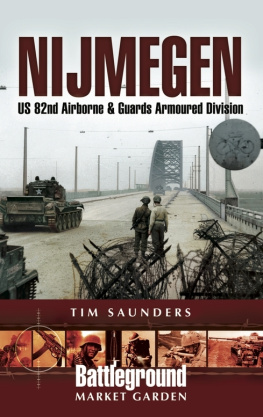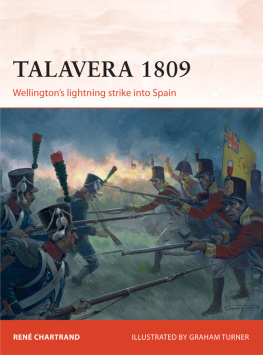Pagebreaks of the print version

Massna at Bay
Massna at Bay
The Lines of Torres Vedras toFuentes de Ooro
Tim Saunders
First published in Great Britain in 2021 by
PEN & SWORD MILITARY
an imprint of
Pen & Sword Books Ltd
47 Church Street
Barnsley
South Yorkshire
S70 2AS
Copyright Tim Saunders, 2021
ISBN 978-1-39900-132-8
eISBN 978-1-39900-133-5
mobi ISBN 978-1-39900-133-5
The right of Tim Saunders to be identified as the author of this work has been asserted by him in accordance with the Copyright, Designs and Patents Act 1988.
A CIP catalogue record for this book is available from the British Library.
All rights reserved. No part of this book may be reproduced or transmitted in any form or by any means, electronic or mechanical including photocopying, recording or by any information storage and retrieval system, without permission from the Publisher in writing.
Pen & Sword Books Limited incorporates the imprints of Atlas, Archaeology, Aviation, Discovery, Family History, Fiction, History, Maritime, Military, Military Classics, Politics, Select, Transport, True Crime, Air World, Frontline Publishing, Leo Cooper, Remember When, Seaforth Publishing, The Praetorian Press, Wharncliffe Local History, Wharncliffe Transport, Wharncliffe True Crime and White Owl.
For a complete list of Pen & Sword titles please contact
PEN & SWORD BOOKS LIMITED
47 Church Street, Barnsley, South Yorkshire, S70 2AS, England
E-mail:
Website: www.pen-and-sword.co.uk
Acknowledgements
This book was written during the 2020 COVID-19 lockdown when the archives and libraries that would normally be the starting-point for research were firmly closed. However, in the great digital leap forward of the year, I have been amazed at quite how much documentation can be found online with a bit of determined digging. To the forums and online libraries that I have used, many thanks. Also very helpful are the considerable number of Peninsular memoirs and diaries that are available through publishers and researchers such as Gareth Glover. As strict lockdown receded, the skeleton staff in sundry regimental museums gave me access to their unique knowledge. I am grateful to one and all.
As usual I have been helped and encouraged by friends and colleagues with historical advice and the battlefield guides knowledge of the ground out in the Peninsula. I particularly thank fellow guide and historian Rob Yuill who helped significantly and loaned me books from his extensive Napoleonic library.
Napoleonic living historians have again played a significant part in helping me understand the armys Peninsular War drill and tactics. The insight they provided has enabled me to go into greater detail, with a clear understanding and ability to interpret those passages in accounts that I for one have tended to pass over quickly.
As before, images of this period that are correct in every respect are but few, and again, museums help in selecting pictures is much appreciated. The living historians who posed illustrative photographs for me have been unstinting with their patience, understanding and their time. I am most grateful to those groups who have allowed us to use images from their archives. I also owe a significant debt of gratitude for the continuing support of Major (Retired) Nick Haines of the Green Jackets and that great artist Christa Hook, whose accurate paintings are not only detailed but evocative even when reproduced in black and white.
Finally, to the team at Pen & Sword: Heather, Matt, Pamela and Noel, once again my thanks for nursing this project to fruition.

|
Tim Saunders Warminster, 2020 |
. |
Introduction
The 1810 French invasion of Portugal, commanded by Marshal Andr Massna, has been well covered by historians. Conversely, the shock revelation of the Lines of Torres Vedras barring the French Army of Portugals way to Lisbon via numerous combats and the Battle of Fuentes de Ooro, through to Massnas dismissal from command, has been frequently and unjustifiably glossed over. Starting with the Lines of Torres Vedras, which were at the heart of Wellingtons peninsular strategy from October 1809 until 1812, this is the story of Wellington while he was still forging his peninsular army, refining his own art of war and is a period when the outcome of the struggle in Iberia was still very much in doubt.
In this book I have as far as possible continued my practice of letting the officers and soldiers of both armies who fought in the campaign, its combats and battles, tell their own story, taking them from Wellingtons lines just a few miles from Lisbon, across Portugal to the borders of Spain and victory over Marshal Massna. The doubts expressed in letters home and diaries during the 1810 invasion in the face of a powerful French army steadily melt away and a growing confidence is observed as the enemy was bundled back to Spain in the early spring of 1811.
The pursuit of Massnas army, however, reveals that Wellingtons army had much to learn in the conduct and coordination of its marches and the commissariat was still unable to supply the army as it advanced. Wellington wrote increasingly pithy instructions on both subjects as he grew progressively frustrated with the senior commanders, a number of whom he regarded as having been foisted on him by Horse Guards.
Some thirty-eight maps are included in the book, but to help readers follow the action on modern topographic maps or indeed follow the campaign on the ground, I have changed all but the most familiar place names to their modern spellings. I have also, as is my normal practice, used the ranks of individuals as they were during 181011.
Chapter One
The Storm Clouds Gather
The hideous leopard contaminates by its very presence in the peninsula of Spain and Portugal. Let us carry our victorious eagles to the Pillars of Hercules. [Napoleon]
Despite his victory at Talavera during the high summer of 1809, the newly-ennobled Lieutenant General Viscount Wellington faced a growing threat from Napoleon. It was generally expected that the master of Europe would turn his attention to the insult to his imperial dignity that was the British army in the Peninsula. Following the Battle of Wagram and the collapse of the Fifth Coalition, there were no pressing military reasons why the emperor could not personally lead the 100,000 men he was preparing for the third French invasion of Portugal. Civil practicalities in France, however, intervened. Issues with money, law, national administration and a new wife saw him handing over command of the Army of Portugal to a reluctant Marshal Andr Massna, one of the few in the marshalate capable of independent action without Napoleons supervision.
Created Prince dEssling following his success in the 1809 Danube campaign, Marshal Massna was tired and recovering after a fall from his horse, and at 55 he was ageing somewhat. According to Major Marbot, an aide-de-camp (ADC) on Massnas staff, another reason for Massnas reluctance to take command was that he was concerned that his senior subordinates would resent him being placed in command over them. thereby bringing Britain to her knees via her economy. The system, however, leaked badly, especially at the extremities of Europe where Portugal continued to trade with Britain.



















